
Conjuring up some New Year’s resolutions? Don’t forget about your yard and the ecosystem of which we are a part. Promise to do something positive in your yard this coming year to help dwindling wild species whose habitats have been—and continue to be—ravaged.
You certainly don’t need to replace every plant in your yard or eliminate all of your lawn to give back to nature, although the more the better. And you don’t need to do everything all at once—baby steps are fine! In fact, incremental change is usually best, since wild species using existing plants and other elements might be harmed by a drastic, rapid change. If you don’t have a yard, think about volunteering with an organization that’s working on a restoration project—it can be satisfying and enjoyable.
Here are ten resolutions I recommend to help make your yard more humane and functional in the coming year. Some are very easy, some not quite so much. Choose one, two, or all! They are not listed in any particular order because each one is important.
Add some clean water. Birds, insects, mammals, amphibians—all creatures—need water year round to survive. Even just a shallow bird bath can help, but some maintenance is a good thing: Change the water every few  days, give it a good scrubbing every week or two, and keep it out of reach of marauding cats and dogs. Plates or shallow bowls filled with clean pebbles or gravel and water will provide for insects; butterflies will also appreciate mud puddles which they use to obtain moisture and nutrients essential for breeding. Artificial ponds should be shallow on one side and have gradually sloping sides so tiny animals can get out easily. More tips here.
days, give it a good scrubbing every week or two, and keep it out of reach of marauding cats and dogs. Plates or shallow bowls filled with clean pebbles or gravel and water will provide for insects; butterflies will also appreciate mud puddles which they use to obtain moisture and nutrients essential for breeding. Artificial ponds should be shallow on one side and have gradually sloping sides so tiny animals can get out easily. More tips here.
Let natural systems flourish and harmonize by minimizing “clean-ups” and maintenance. Yes, this one lets you work less! Allow fallen leaves to stay on the soil to create cover for overwintering insects like bumblebees and butterflies as well as food for birds, raking or sweeping them only off areas that need to be clear (like sidewalks, driveways, or lawn). Leave dead wood such as snags (dead or dying trees that won’t crash on someone’s head) and “downed wood” —fallen branches, twigs, and bark—which is absolutely essential wildlife habitat that will protect and nurture soil, too. Create brush piles or rock piles to help provide cover and nest sites for birds  and other small creatures. Leave seed heads and flower stalks on perennials until spring is well under way to provide food, cover, and habitat. If/when you eventually cut them back, leave them on the ground for a month or longer in case they contain native bee larvae or other overwintering insects waiting for the chance to live out their lives.
and other small creatures. Leave seed heads and flower stalks on perennials until spring is well under way to provide food, cover, and habitat. If/when you eventually cut them back, leave them on the ground for a month or longer in case they contain native bee larvae or other overwintering insects waiting for the chance to live out their lives.
Get rid of invasive plants that compete with natives. Depending on the plant species, this can be an easy job or one likely to give you headaches, backaches, and an urge to scream. It can take a few days or a few years. But once your task is accomplished, I guarantee that you will feel an extreme sense of satisfaction. And there will be more room to plant lovely, functional plants! If you have several invasive species in your yard, determine which may be the most invasive and start with that. Nonnatives that produce berries, like English holly trees, are particularly problematic because they spread into nearby natural areas by birds, but also via vegetative reproduction. English ivy also produces berry-like fruit and spreads by rooting on the soil surface and on tree trunks—at the very least, periodically cut it back at the base of trunks to prevent it from harming trees. There are numerous introduced plants that push out native species, so check with city, county, and/or state agencies to find lists and descriptions of invasive plants in your area; the USDA also offers information. My book offers some tips for removing invasive plants, as does Green Seattle Partnership and this post.
Remove lawn. Lawn for the sake of lawn is not beneficial and is awfully wasteful. When deciding which part(s) of your lawn will receive walking papers, start by choosing areas that you never or rarely use. Often this is the front yard. If you’re not ready to go all the way and remove a large area of turf, consider at least removing lawn under trees and in areas that are difficult to mow, such as slopes. Lawn can also be minimized by enlarging existing beds and adding ecologically beneficial native plants. The gentlest way to remove lawn is to simply cover it with about 6 sheets of overlapping newspaper (or cardboard) on a non- windy day. Dampen it, poke a some small holes, then top it with 4 or 5 inches of weed-free compost (leaf compost is good) and fallen leaves over that. Leave it to decompose for at least several months (until grass roots have died) before planting. Removing lawn via a sod cutter or spade can damage tree/shrub roots.
windy day. Dampen it, poke a some small holes, then top it with 4 or 5 inches of weed-free compost (leaf compost is good) and fallen leaves over that. Leave it to decompose for at least several months (until grass roots have died) before planting. Removing lawn via a sod cutter or spade can damage tree/shrub roots.
Grow native plants that are indigenous to your area. For this I suggest you consult a regional native gardening book like my book (if you live in the Pacific Northwest, west of the Cascades). Choose species (preferably “true species,” not cultivars) that are native to your area and that will flourish in your site’s soil, light, and moisture conditions. Grow them with other members the same plant community to provide the most benefit.
Provide for all life stages of pollinators. Many pollinating insects, including native bees and butterflies, will have gone through several stages by the time they reach adulthood and their needs differ greatly. So, in addition to providing water and growing groups of sequentially-flowering plants (preferably native to your area) that supply pollen and nectar from early spring through fall, provide the “host plants” needed for egg laying and for the feeding of larvae (in the case of butterflies and moths: caterpillars). For insects that undergo a complete metamorphosis, protect habitat for pupa (chrysalis). The latter mainly involves simply leaving fallen leaves and other organic matter on the soil, delaying any pruning of host plants until late spring, and not using leaf blowers, which eliminate the habitat of creatures needing a place to wait out the winter, such as chrysalis held in place on a twig by a fragile silken thread.
Don’t use pesticides or poisons. Synthetic pesticides should be avoided at all costs, but even so-called organic controls can be deadly and indiscriminate, especially if used improperly. If a pest if causing enough damage in your  kitchen garden to warrant a control, consider hand removal, barriers and screens, companion plants, or simply sprays of water from the hose. Allow a natural balance by welcoming natural pest control such as birds (see bushtit devouring aphids, right) and predatory insects.
kitchen garden to warrant a control, consider hand removal, barriers and screens, companion plants, or simply sprays of water from the hose. Allow a natural balance by welcoming natural pest control such as birds (see bushtit devouring aphids, right) and predatory insects.
Protect birds from reflective glass. Up to a billion birds are killed or injured by colliding with buildings in North America each year. Though skyscrapers kill countless birds, large structures four stories or less in rural locales are responsible for the most bird deaths, according to a 2017 study. Many of those strikes can be prevented and here are some ways to help.
Keep Kitty indoors. Domesticated cats kill millions of birds each year, but it’s not their fault they’re outside. Whenever possible, keep your little predators indoors for their safety as well to protect little wild creatures. To prevent boredom and health issues: Add levels, especially around windows, widen windowsills with tables of appropriate height, or add window boxes. If you’re more ambitious, build a catio! They come in all sizes, shapes and price ranges and provide kitty with a safe outdoor experience.
Turn on the dark. Look out your windows at night and chances are—if you live in an urban area—you won’t see the twinkle-twinkle of little stars because light pollution (any adverse effect of artificial light) is making the night sky glow brighter each year. Its most obvious effects are on migratory songbirds lured into cities where they collide with unnecessarily illuminated buildings, killing more than 100 million of them each year in North America. But lit up low-rise structures in rural locales also distract and have been found to pose greater danger than similarly-sized urban buildings, with what researchers call “the large scale beacon effect.” And for nocturnal animals, artificial light may be the most extreme change forced upon them. You can help by minimizing artificial lighting migration seasons, and anytime to prevent moths from exhausting themselves to death, to keep bats in the dark, and diurnal animals asleep. Choose fixtures that shine light downwards, not to the side or upwards, and use motion-sensors so that lights go on only when necessary. If you worry about crime, studies show that outdoor lighting does not decrease crime and may even exacerbate it; most residential crime occurs during daylight hours. In addition, cover windows with shades or draperies at night to cut down on light escaping your house. More info.
To leave a comment, please click on the blog’s title
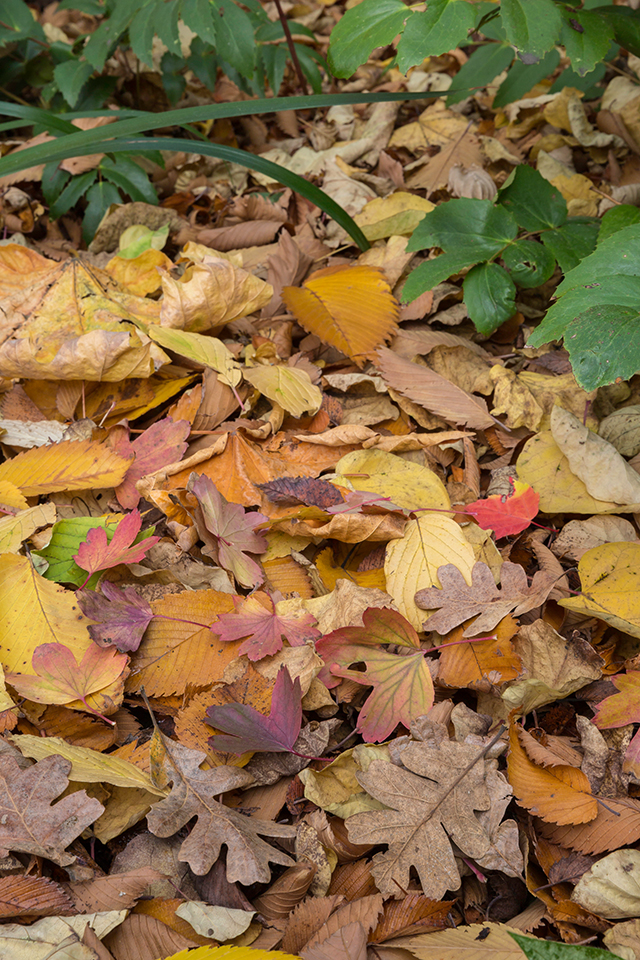
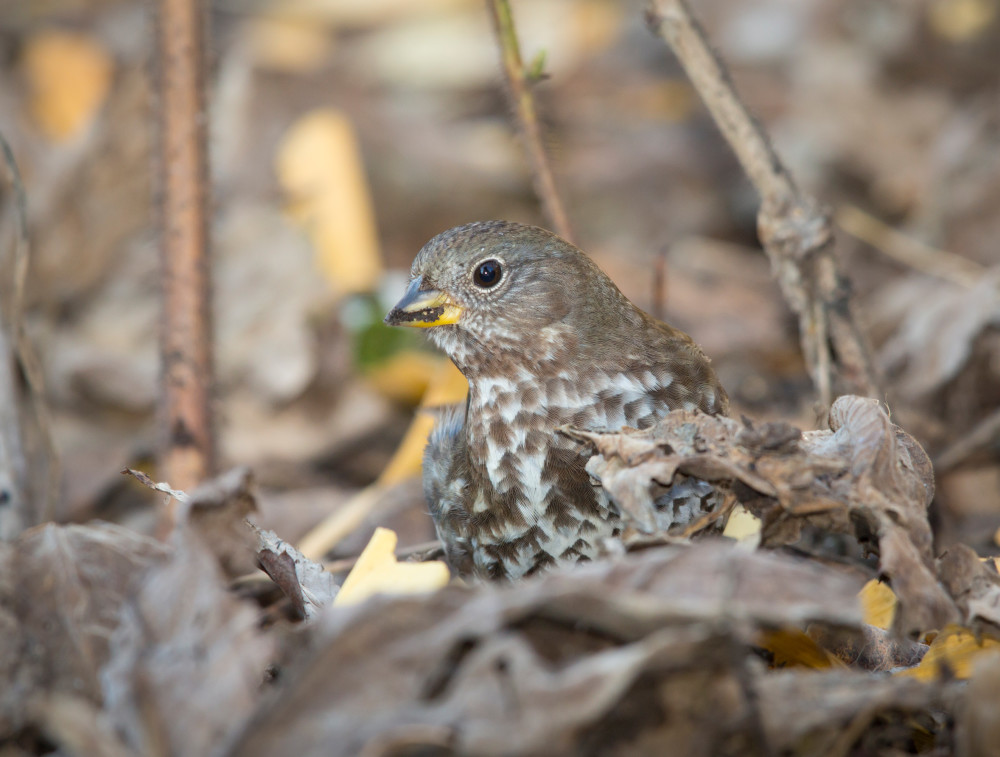



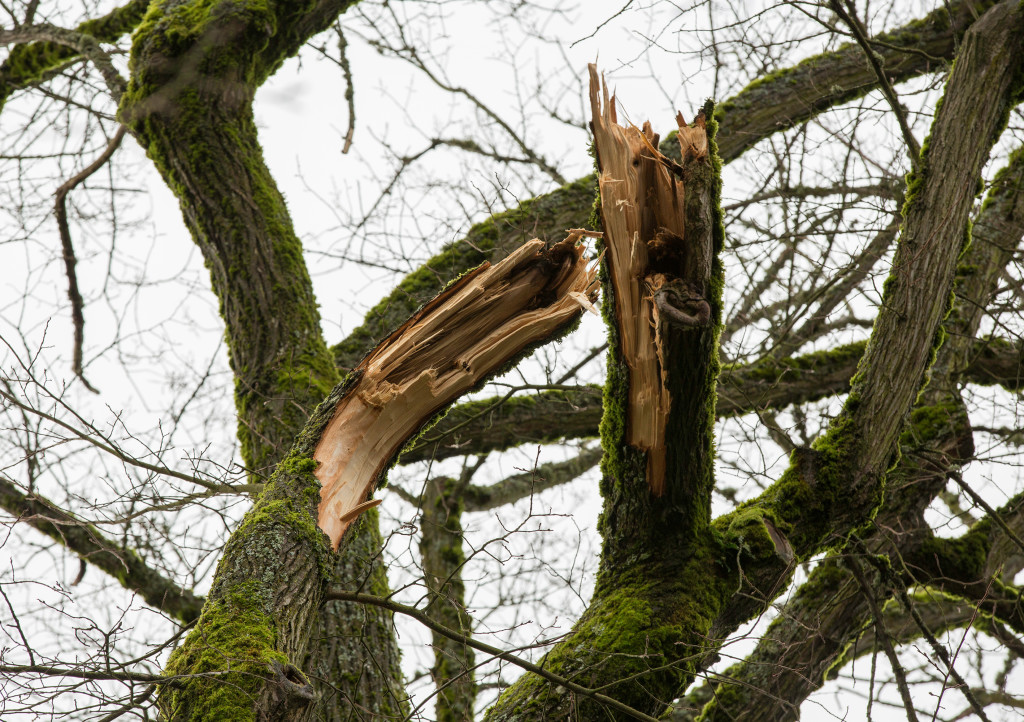 as an elm. Sharp cuts that don’t leave stubs (partially amputated branches not cut back to the branch collar that look like you could hang a hat on it) will allow for faster healing and may prolong the life of the tree. But if safety is not an issue, consider that natural, important habitat is created when damaged limbs are simply left on the tree. As I wrote in my book, “interactions between wildlife and decaying wood are fundamental to ecosystem functions and processes in forests, aquatic habitats,”
as an elm. Sharp cuts that don’t leave stubs (partially amputated branches not cut back to the branch collar that look like you could hang a hat on it) will allow for faster healing and may prolong the life of the tree. But if safety is not an issue, consider that natural, important habitat is created when damaged limbs are simply left on the tree. As I wrote in my book, “interactions between wildlife and decaying wood are fundamental to ecosystem functions and processes in forests, aquatic habitats,” 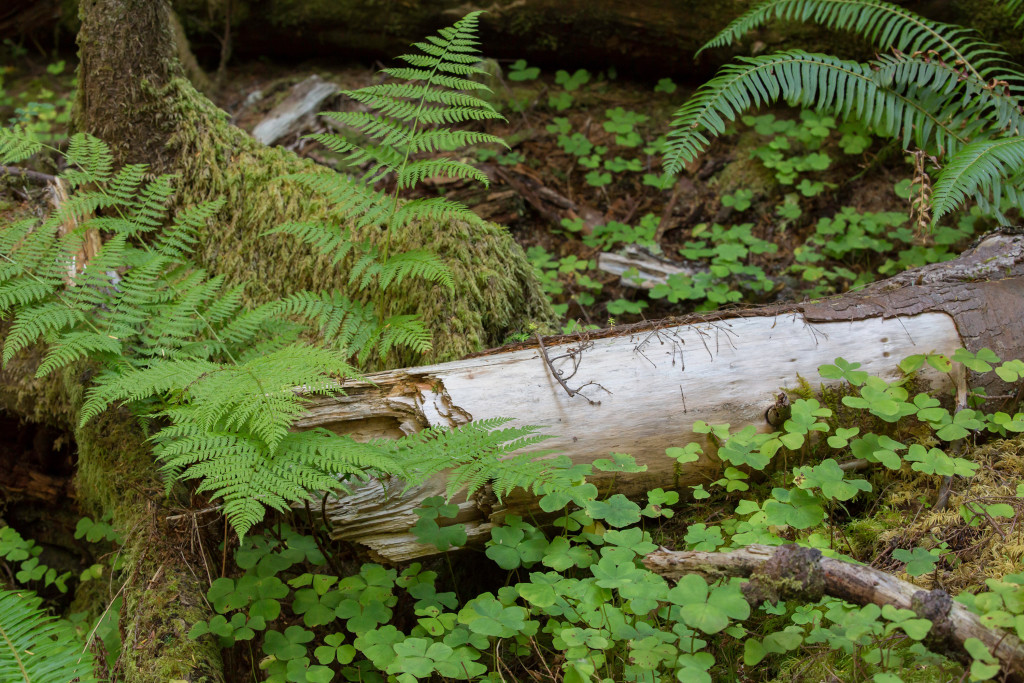

 roughly 15 feet tall and cut back branches. If that’s not possible and you must cut it down, leave the trunk on the ground where it won’t get in your way and leave the stump. If you already have a snag, retain or add native shrubs near its base. They will help keep it protected from weather extremes and provide connectivity, leafy cover, and additional forage for wildlife.
roughly 15 feet tall and cut back branches. If that’s not possible and you must cut it down, leave the trunk on the ground where it won’t get in your way and leave the stump. If you already have a snag, retain or add native shrubs near its base. They will help keep it protected from weather extremes and provide connectivity, leafy cover, and additional forage for wildlife.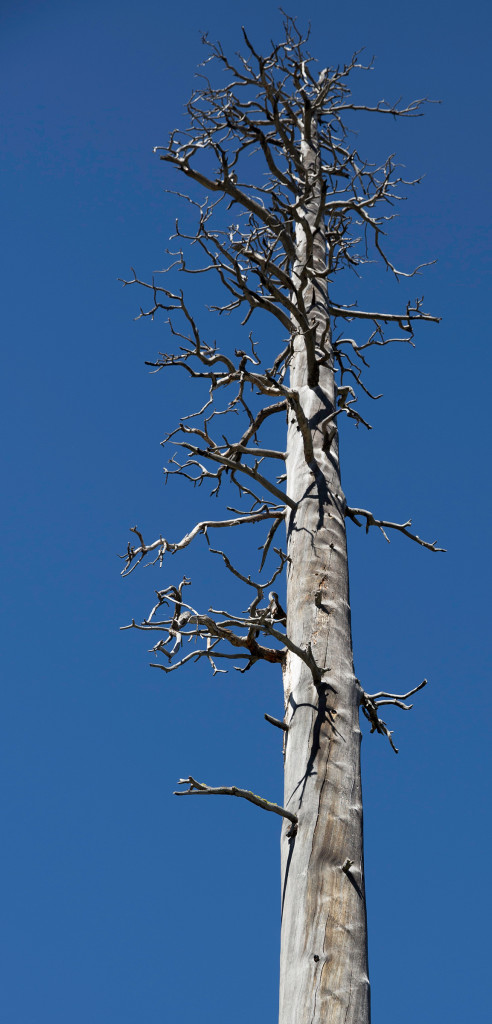 them into your landscape, and the wild ones will thank you.
them into your landscape, and the wild ones will thank you. the quiet beauty that unfolds during all stages of natural decomposition and regeneration. Imagine a “nurse log” in your own yard that will increase biodiversity by providing decades of nutrients and moisture to other plants and soil organisms. While natural, moss-furred nurse logs (fallen forest trunks and limbs) provide complex substrates for regeneration of trees in intact forests, there’s no reason you can’t foster similar function in your yard (but never remove nurse logs from a forest). Surround a fallen giant with native ferns and other shade lovers to blend and complement, and the mystery and magic begins. It rots slowly at first, then begins to crumble away, providing more sustenance for other species. After a few decades, the log will be reduced to nothing but fragments, but the soil—nurtured, enriched, and full of life—will pass on its riches.
the quiet beauty that unfolds during all stages of natural decomposition and regeneration. Imagine a “nurse log” in your own yard that will increase biodiversity by providing decades of nutrients and moisture to other plants and soil organisms. While natural, moss-furred nurse logs (fallen forest trunks and limbs) provide complex substrates for regeneration of trees in intact forests, there’s no reason you can’t foster similar function in your yard (but never remove nurse logs from a forest). Surround a fallen giant with native ferns and other shade lovers to blend and complement, and the mystery and magic begins. It rots slowly at first, then begins to crumble away, providing more sustenance for other species. After a few decades, the log will be reduced to nothing but fragments, but the soil—nurtured, enriched, and full of life—will pass on its riches. nuthatches, woodpeckers, swallows, or owls that is sited correctly and is accessible for annual cleaning. Though not as good as natural nest sites due to their inability to insulate as real tree cavities do, boxes are better than nothing.
nuthatches, woodpeckers, swallows, or owls that is sited correctly and is accessible for annual cleaning. Though not as good as natural nest sites due to their inability to insulate as real tree cavities do, boxes are better than nothing.